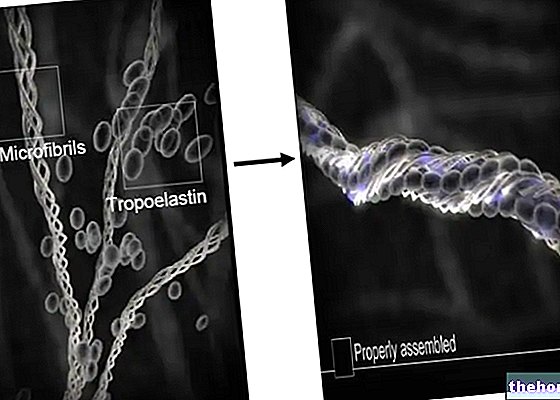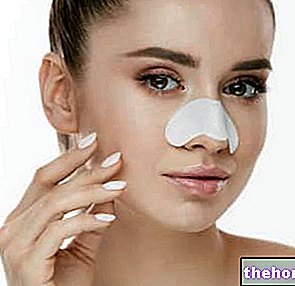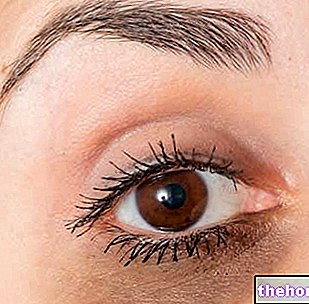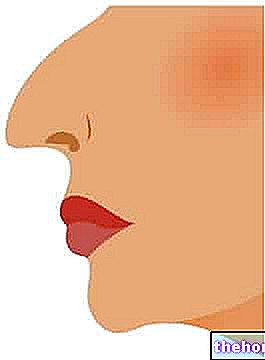What's this
Photodynamic therapy is an innovative technique used successfully in the treatment of skin diseases and disorders of different origins and nature.
Photodynamic therapy is also known as PDT (English acronym for Photo Dynamic Theraphy) and makes use of particular substances - called photosensitizers - which, to perform their function, must be activated by a light source. As a consequence of this activation, a photodynamic reaction is established which selectively destroys the malignant cells.

Indications
As mentioned, photodynamic therapy is useful for treating skin disorders and diseases of various origins and nature. This particular technique, in fact, can be used both in the aesthetic and medical fields.
In detail, phototherapy is particularly suitable for treating / countering:
- Acne;
- Warts;
- Skin lesions due to photodamage;
- Skin aging;
- Actinic and solar keratosis;
- Pre-tumor lesions;
- Tumors (such as squamous cell carcinoma and basal cell carcinoma).
Furthermore, photodynamic therapy can also be used to remove unwanted hair (epilation).
In any case, it should be pointed out that - although it is a treatment that can also be used in the aesthetic field - photodynamic therapy must in any case be prescribed by the specialist.
However, this article will mainly describe the aspects and operating principles of photodynamic therapy applied in the medical-oncological field.
Mechanism of action
Before proceeding with the description of the mechanism through which photodynamic therapy carries out its action, it is necessary to better understand what photosensitizing substances are.
The photosensitizing substances are substances which, applied to the injured skin, penetrate it and select the malignant cells, distinguishing them from the healthy ones. Their name is due to the fact that these compounds can only be activated by a particular "light irradiation. In fact, if these substances are applied to the injured epidermal surface without being irradiated by light, photodynamic therapy does not bear fruit.
Of course, light represents the common thread of photodynamic therapy, since, without it, the therapy would not be effective.
When the area of the body on which the photosensitizing substances have been applied is irradiated by light at a specific wavelength, the aforementioned substances absorb part of the light radiations resulting in the formation of reactive oxygen species (ROS, acronym deriving from "English" Reacting Oxygen Species ") that destroy the cells in which they have grown.
Since the photosensitizing substances, in the field of photodynamic therapy, are capable of distinguishing harmful cells from healthy cells, ROS will only form in malignant cells, leaving intact those that are not diseased and not damaged.
However, a clarification is appropriate: oxygen is present in all cells, but it evolves into the reactive form (ROS: oxygen peroxide, superoxide anion and singlet oxygen) only when the cell is excited by light.
The photodynamic theory is complex, but very effective and above all painless.
Types of photosensitizers
Before analyzing in detail which photosensitizing substances are used in photodynamic therapy, it is necessary to specify that, as a rule, the compounds used to combat neoplastic pathological disorders are different from those used for aesthetic purposes. Furthermore, the way in which these substances are administered also differs according to the disorder that must be treated.
In patients who undergo photodynamic therapy to treat problems of an aesthetic nature (e.g. acne, hair removal, etc.) or less serious skin diseases and disorders, the photosensitizing substances must remain in contact with the skin for a relatively consistent period (2 or 3 hours ), necessary to allow its penetration in depth. In more serious cases, however, the substances are administered intravenously (this procedure is generally carried out for the elimination of neoplasms).
The most commonly used photosensitizing substances for the treatment of neoplastic pathologies are hematoporphyrin (HP) and its derivatives. In these cases, as mentioned above, hematoporphyrin is administered intravenously. In this way, the substance diffuses through the blood and is able to reach all districts; despite this, only the diseased tissues retain it, while the healthy cells are able to rapidly eliminate it.
Another photosensitizing substance used for medical purposes (oncological and not only) is 5-aminolevulinic acid (5-ALA). 5-ALA, in truth, is the first compound to take part in the series of reactions that lead to the biosynthesis of porphyrins, so it is a compound that is naturally produced by cells. However, if administered through the skin (topically), and irradiated with light at a known wavelength, this substance is activated by destroying the abnormal cells.
In addition to the medical field, 5-aminolevulinic acid can also be used to perform photoepilation (therefore in the aesthetic field): in these cases, the target to be eliminated is represented by the hair and the interaction between substance and light energy is the medium useful for destroying the follicle.
Here are some examples of drugs used in photodynamic therapy: Foscan - temoporfin; Gliolan - 5-aminolevulinic acid hydrochloride; PhotoBarr - sodium porphyry; Visudyne - verteporfin.
Before the treatment
Before undergoing photodynamic therapy, obviously, it is necessary to carry out an "accurate dermatological examination, during which the doctor will determine the type of skin lesions to be treated and will decide which treatment is best suited to each individual case.
If the physician agrees to perform photodynamic therapy, the patient must avoid using cosmetic products of any kind in the treated area for the three days preceding the treatment.
The treatment
The actual treatment begins with the administration of the photosensitizing substances chosen by the doctor (intravenously or topically, as appropriate). After that, you can proceed with the irradiation of the area affected by the disorder or pathology.
The light energy used may differ according to the type of photodynamic therapy: for example, if 5-ALA is used as a photosensitizing substance, the lamps should emit red light at a wavelength of 660 nanometers. The light emission radius drops to 630 nanometers when the photosensitizing substance is hematoporphyrin.

In the first few minutes of treatment, the patient may feel a slight sensation of heat, associated with any pain or burning. These symptoms are attributable precisely to the elimination of damaged or diseased cells. In any case, should these symptoms occur, it is sufficient to temporarily interrupt the treatment and resume it as soon as they are attenuated.
To overcome the problem of heat, however, usually, the machines for photodynamic therapy are also equipped with special fans.
Depending on the disorder or pathology to be treated, it may be necessary to resort to more than one session of photodynamic therapy. For example, the lesions caused by actinic keratosis resolve in a single session; for pre-cancerous forms, however, more therapies may be needed.
Side effects
Side effects due to this type of therapy are generally mild and reversible.
Immediately after the treatment and in the following two or three weeks, it is quite common to feel burning, pain or itching in the area that has been treated.
If the pain is particularly severe, the doctor may decide to prescribe pain medication.
Contraindications
Although it is generally well tolerated, photodynamic therapy is contraindicated in patients with:
- Photosensitivity;
- Xeroderma pigmentosum;
- Porphyria.
Photodynamic therapy is also contraindicated in pregnancy, during lactation and in patients under 16 years of age.
Furthermore, this treatment cannot be performed in patients who have undergone retinoic acid-based therapies in the previous thirty days.
Limits, Cost and Disadvantages
Photodynamic therapy is an innovative technique, very effective and generally painless, unfortunately, however, it also has some limitations and disadvantages.
One of the main limitations is undoubtedly the cost: the price of drugs and machinery used to emit light rays is very high. The technique, besides being very expensive, is decidedly complex and laborious: photodynamic therapy requires, therefore, specialized personnel and adequate medical facilities.




























